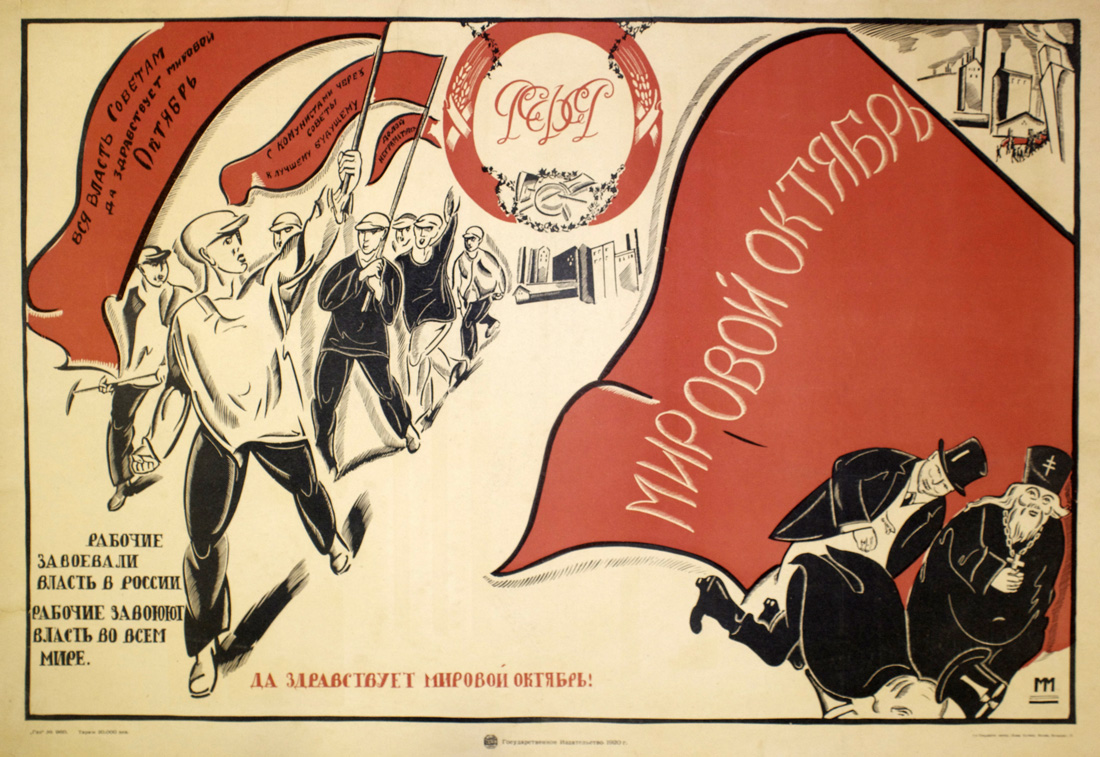
Workers won power in Russia. Workers will win power in the whole world. Long live Worldwide October!
Poster Number: PP 323
Category: Workers
Poster Notes: (Emblem at center) "RSFSR" [Russian Soviet Federative Socialist Republic]. (On first flag at left) "All Power to the Soviets! Long live Worldwide October!". (Second flag at left) "With the Communists through the Soviets toward a Better Future". (Large flag at right) "Worldwide October".
Media Size: 38.5x26
Poster Type: Lithograph
Publishing Date: 1920
Technical Information on Poster: Publication No. 960; Year 1920
Print Run: 20,000
Glavlit Directory Number: A-81016
Sources & Citation: Soviet Posters of the era of the Civil War 1918-1921 by B. S. Butnik-Siverskii (1960), page 195, poster 539
Catalog Notes: PP 323 Workers b
Artist: Matorin, Mikhail Vladimirovich — Маторин, Михаил Владимирович
Printer: 1st State Typo-lithography Workshop, Moscow (formerly Sytin) — 1-я Государственная типо-литография, Москва (до Сытина)
The 1st State Typo-lithography Workshop began as the Sharapov-Sytin Partnership in the era before the Russian Revolution. Ivan Dmitrievich Sytin (1851-1934) was the son of a peasant from the Kostroma region northeast of Moscow. In the 1860s, Sytin worked in Moscow as an apprentice and then as the manager for a printing shop owned by Peter Nikolaevich Sharapov. In 1879, Sytin opened his own printing shop in Moscow using a single press. By the start of ...
Read More About This Printer
Publisher: State Publishing House — Государственный издательство
The State Publishing House had its origins in Imperial Russia as the Royal Print Yard of St. Petersburg. In 1917, the Soviets nationalized the print yard and requisitioned its presses. From requisitioning emerged the Publishing House of the Petrograd Soviet that was formed in the winter of 1917 by the Literary and Publishing Department of People's Commissariat for Education. In 1919, the State Publishing House in St. Petersburg changed its name to Petrogosizdat (Petrograd State Publishing) and in 1924, ...
Read More About This Publisher